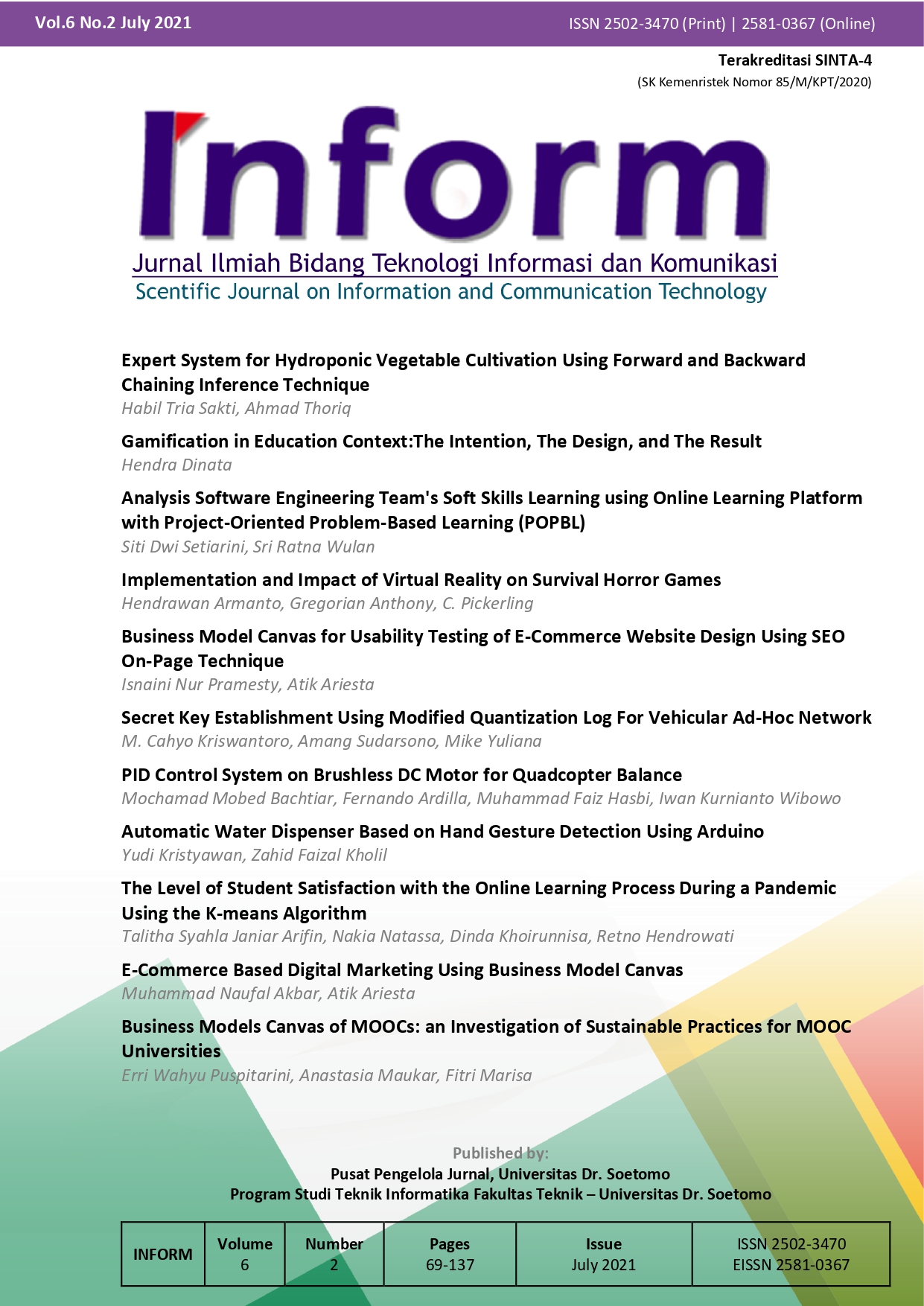Secret Key Establishment Using Modified Quantization Log For Vehicular Ad-Hoc Network
 Abstract views: 230
,
Abstract views: 230
,
 PDF downloads: 195
PDF downloads: 195
Abstract
Traditional cryptographic approaches such as symmetric and asymmetric cryptography are commonly employed to solve network security issues. The Secret Key Generation (SKG) system has the advantage of extracting secret keys from a wireless channel's physical layer information. It allows two wireless devices within the transmission range to extract a shared symmetric key without the use of a fixed key distribution infrastructure, allowing vehicular ad hoc networks to exchange information (VANET). This study aims to create a secure data communication system on the Vehicular Ad-Hoc Network using RSS Key Generation. Starting from the Modified Quantization Log, the results of the Modified Quantization Log show that the average KDRM between Alice and Bob is the average KDRM between Alice and Bob is 9.4%; meanwhile, the average KGR is 71.4 bps. This shows that the number of bit mismatches after the Modified Quantization Log process between the two valid users is already small, because they have used the pre-processing process in front of them, namely using the Kalman Filter and from the results of the BCH Code to be matched again so that it becomes the key. The next process is Universal Hash which is tested with the NIST test. The NIST Test parameters used are approximately entropy, frequency, block frequency, longest run, cumulative sum forward, and cumulative sum reverse. The existing results are appropriate; namely, the threshold in p whose value is above 0.01 is achieved. From the results of the Average Approximate Entropy, it is found that the largest value is obtained by the 40k10ms scheme, which is 0.7352.
References
C. Wei, “V2X communication in Europe - From research projects towards standardization and field testing of vehicle communication technology,” vol. 55, pp. 3103–3119, 10 2011.
R. Coppola and M. Morisio, “Connected car: Technologies, issues, future trends,” ACM Comput. Surv., vol. 49, no. 3, pp. 46:1–46:36, Oct. 2016. [Online]. Available: http://doi.acm.org/10.1145/2971482
S. Garg and G. S. Aujla, “Accessing risk priority of SSL SYN attack using game theoretic attack defense tree model for VANETs,” in 3rd International Conference on Computing for Sustainable Global Development (INDIACom), New Delhi, India. IEEE, March 2016.
A. Sudarsono, M. Yuliana, and P. Kristalina, “A Reciprocity Approach for Shared Secret Key Generation Extracted from Received Signal Strength in The Wireless Networks”, IEEE Access, pp. 177-182, 2018.
M. Yuliana, Wirawan, and Suwadi, “Performance Evaluation of the Key Extraction Schemes in Wireless Indoor Environment”, International Conference on Signals and Systems (ICSigSys), pp. 138–144, 2017.
L. Cheng, L. Zhou, B.C. Seet, W. Li, D. Ma, and J. Wei, “Efficient Physical-Layer Secret Key Generation and Authentication Schemes Based on Wireless Channel-Phase”, Journal of Hindawi Mobile Information Systems, Vol. 2017, Article ID 7393526, pp. 1–13, 2017.
M. Yuliana, Wirawan, and Suwadi, “Performance Evaluation of the Key Extraction Schemes in Wireless Indoor Environment,” International Conference on Signals and Systems (ICSigSys), pp. 138–144, 2017.
M.A. Forman, D. Young, and D.R. Dowdle, “The Generation of Shared Cryptographic Keys through Channel Impulse Response Estimation at 60 GHz, Sand Report”, Sandia National Laboratories, SAND2010-6662, Unlimited Release, Printed September, 2010.
A. Ambekar and H.D. Schotten, Enhancing Channel Reciprocity for Effective Key Management in Wireless Ad-Hoc Networks, IEEE 79th Vehicular Technology Conference (VTC Spring), Electronic ISBN: 978- 1-4799-4482-8, 2014.
J.L. Carter and M.N. Wegman, Universal Classes of Hash Functions, Journal of Computer and System Sciences 18, pp. 143–154, 1979.
A. Sudarsono, M. Yuliana, P. Kristalina, and A. R. Barakbah, An Implementation of Shared Key Generation Extracted from Received Signal Strength in Vehicular Ad-Hoc Communication, The Sixth International Symposium on Computing and Networking, 2018.
Peng, L., Li, G., Zhang, J., Woods, R., Liu, M., & Hu, A, An Investigation of Using Loop-back Mechanism for Channel Reciprocity Enhancement in Secret Key Generation, EEE Transactions on Mobile Computing. DOI: 10.1109/TMC.2018.2842215, 2018
A. Ambekar and H.D. Schotten, Enhancing Channel Reciprocity for Effective Key Management in Wireless Ad-Hoc Networks, IEEE 79th Vehicular Technology Conference (VTC Spring), Electronic ISBN: 978- 1-4799-4482-8, 2014.
Copyright (c) 2021 M. Cahyo Kriswantoro

This work is licensed under a Creative Commons Attribution-ShareAlike 4.0 International License.
Authors who publish with Inform: Jurnal Ilmiah Bidang Teknologi Informasi dan Komunikasi agree to the following terms:
-
Authors retain copyright and grant the journal right of first publication with the work simultaneously licensed under a Creative Commons Attribution License (CC BY-SA 4.0) that allows others to share the work with an acknowledgment of the work's authorship and initial publication in this journal.
-
Authors are able to enter into separate, additional contractual arrangements for the non-exclusive distribution of the journal's published version of the work (e.g., post it to an institutional repository or publish it in a book), with an acknowledgment of its initial publication in this journal.
-
Authors are permitted and encouraged to post their work online (e.g., in institutional repositories or on their website) prior to and during the submission process, as it can lead to productive exchanges, as well as earlier and greater citation of published work.













